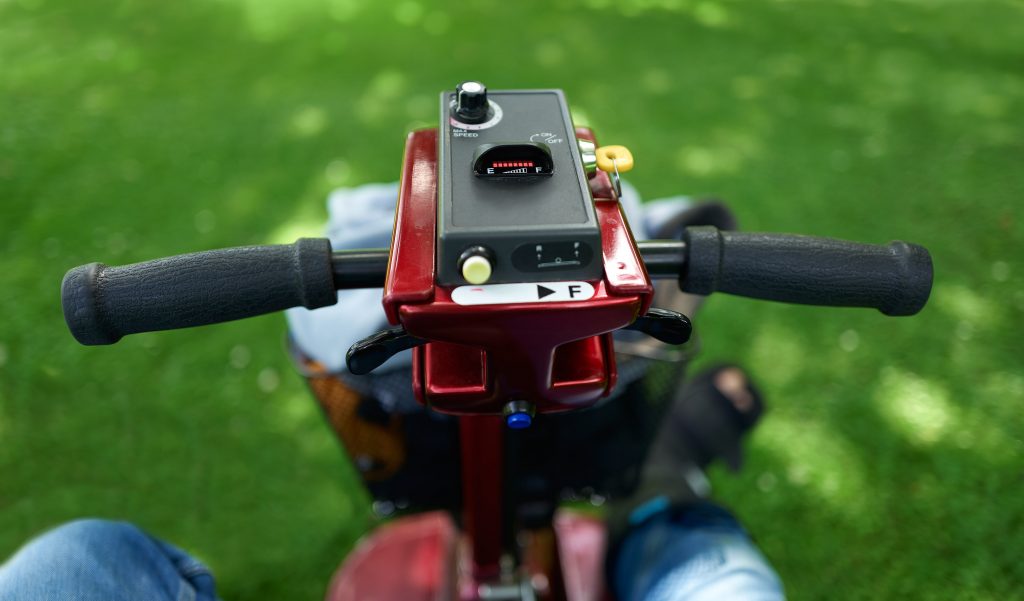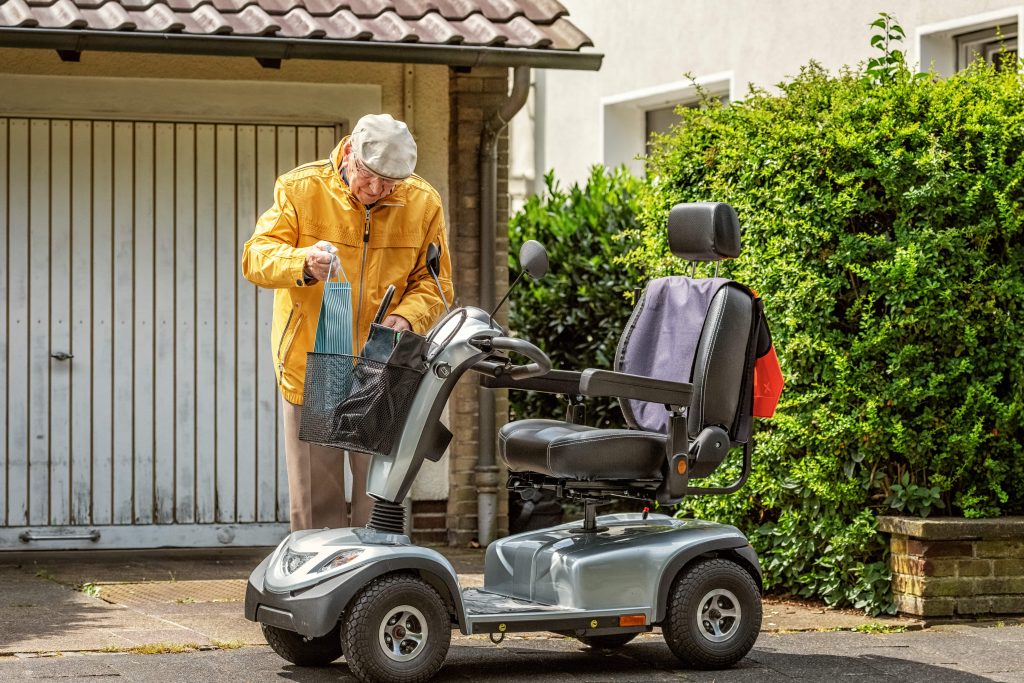Getting back on the road: A safety guide for disabled mobility scooters
For those who find walking for long distances difficult, tiring or painful, a mobility scooter can be an absolute godsend. It affords a new lease of life, enabling travel that would previously have been problematic – if not impossible – and can add a strong degree of independence to those that might otherwise feel somewhat confined.
However, while mobility scooters can indeed be incredibly beneficial, they needed to be handled carefully and safely so as to maintain the wellbeing of the user. With lockdown restrictions having been eased, and given that shops, restaurants and pubs have now opened their doors, there has never been a better time to get clued up on the ins and outs of scooter safety.
Find a scooter that works for you
The very first step is, of course, to ensure that you find a scooter that matches your needs. There are certain modifications that can be added to suit your very specific mobility requirements, and taking the time to figure out what works best, rather than just choosing the first vehicle that comes along, is essential.
It should go without saying that you should always ensure you deal with a reputable and trusted seller. Not only will this ensure that the vehicle itself is up to scratch, but will also mean that you will be able to get accessories and add-ons should they be required, and you can be assured that these will all work effectively.
Know your scooter back to front
Before you take the scooter out for a proper test drive, make sure you are fully acquainted with all of the scooter’s elements; the last thing you want is a button or switch to take you by surprise when you’re travelling along a busy pedestrian area or beside a traffic-laden street. By doing this you will not only guarantee your own safety, but also the safety of others.

Once you are very aware of every feature of the scooter, practice, practice and then practice some more! The more familiar you are with how it handles and operates the better.
Make yourself visible
Once you’ve got to the point where you’re ready to take your scooter out and about, it’s absolutely essential that you ensure that you are visible so that road users, pedestrians and cyclists are able to see you regardless of the time of day or the weather.
The first thing you should do is purchase a high-visibility jacket and potentially other high-vis equipment; a belt, for example, and maybe even a bag. You will, generally speaking, be able to get such pieces of kit from a reputable scooter supplier, and even if they don’t have them in store, they will be able to offer guidance and advice.
It is certainly worth adding reflective strips to your scooter if they are not already applied, because this will ensure you can be seen from a distance even in the dark. However, it is key to remember that none of these safety features should in any way hamper the vehicle’s in-built safety features – lights, rear-view mirrors and your indicators, for example.
Plan your route in advance
This may sound like a lot of admin, but it really needn’t be. Your route will usually be relatively simple and easy to navigate, but it may be that weather conditions, traffic or roadworks could necessitate a change of direction. The more aware you are of the route you are taking, the better prepared you will be to tackle any obstacles.
It is also worth ensuring that you always have a mobile phone with you; if you do get into any difficulties, regardless of what they may be, being able to contact a friend or family member can be invaluable.
Make sure any shopping is packed and balanced appropriately
If you’re going out shopping – which can an arduous task at the best of times – it’s important to understand your scooter’s limitations. If you know the weight it can carry, and the best place to position items so that the vehicle is never unduly unbalanced, you will be able to travel to and from stores without any hassle.

Maintain the scooter properly
As with any vehicle, it is important to ensure it is maintained properly so that it is always safe and in working order. You should have a regular maintenance schedule – every six months is reasonable – and then also check-ups on an ad-hoc basis should your vehicle feel as though it isn’t operating efficiently.
You should also make sure that you keep the vehicle as clean as possible and do all you can to keep the battery in the most pristine order. If the battery feels as though it isn’t as powerful as it once was, get in touch with a professional and they will be able to give you the best available advice.
It is also incredibly important to ensure your scooter is insured. It is a vehicle, after all, and insurance is essential. Want to know more about our specially designed insurance for mobility scooters? Get a quote today!


